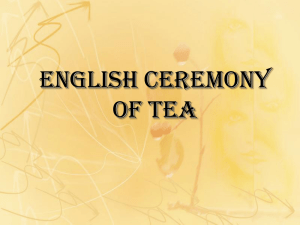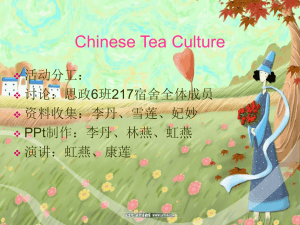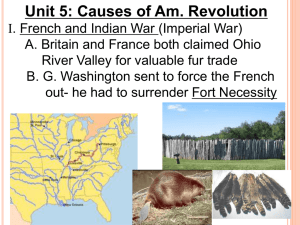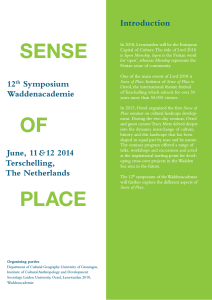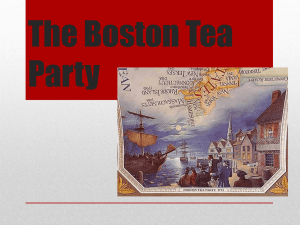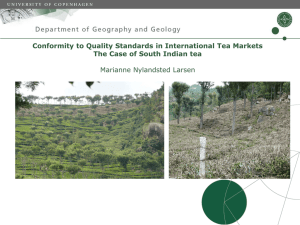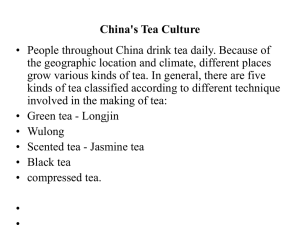МОНГОЛООР ДАЙРСАН “ЦАЙНЫ ЗАМ”
advertisement
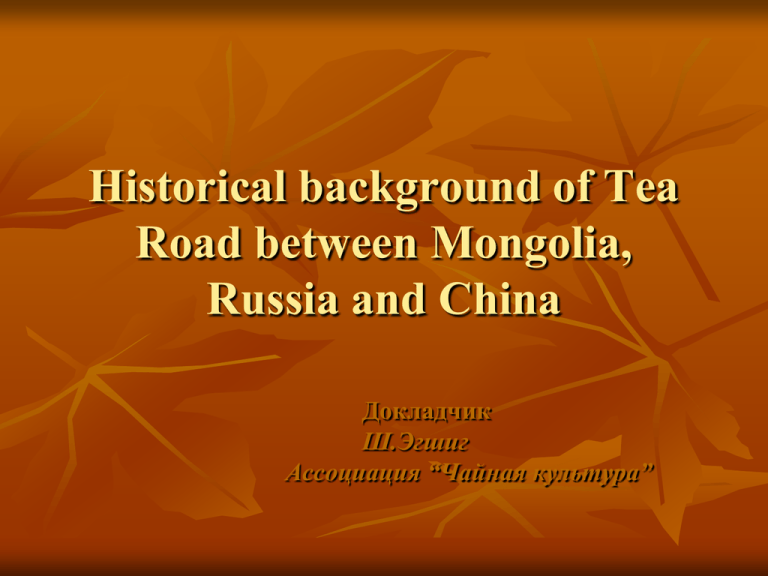
Historical background of Tea Road between Mongolia, Russia and China Докладчик Ш.Эгшиг Ассоциация “Чайная культура” “Tea” was one of the commodities that played a historical role in the lifestyle of Mongolian forefathers. There is a theory that before our era (B.C.) people in Southeast Tibet were the first to start processing and consuming “tea”. During the period of Altan khan of Tumed, religious advocacy of Gelegpa in Tibet was in need of a powerful political protection whereas Mongolians were looking for a strong religious influence. As a result of such a mutual interest, Altan khan of Tumed created a new rank for the religious leader of Tibet and proclaimed him as the “Dalai Lama”. Chinese merchants used to buy military horses from Tibet via Uigurs by trading tea during the Min dynasty early time. In 1571 officially opened trade markets called “Horse trade” in six different locations. From this time on, Mongolians started trading their gelded horses for silver ingots and other commodities, and the abovementioned “Horse trade” was opened in Khaalgan city. In the autumn of 1577, Chinese began permitting the trade of tea with Mongolia. Eventually, Khaalgan city became a key intersection of tea trade. A friendly relationship was set between Russia and Altan khanate, and ambassadors of Altan khanate made visits on four different occasions during the span of 1632-1638. In 1638 Altan khan Ombo-Erdene treated Russian diplomats Vasily Starkav and Stepan Neverov with such beverages, which suggests it was the first the Russians tried a tea. It is surprising to learn that it took an effort for Altan khan to convince V. Starkav to convey 200 packs of tea as a gift for king Mikhail Fedorovich. Aristocrats liked the tea, and gradually started to bring more teach to Russia. Inevitably, tea became popular among the public, and was rated in the list of luxurious commodities, after gold, silver and valuable stones. Amongst the Chinese trade firms, Dashengkui firm – the biggest trader with Mongolia – organized his operations from the beginning aiming to engage in trade with Mongolians. The firm was able to operate in a very flexible manner for any business operations and transactions. At the time, from the wholesale tea trade stationed in Hankow, they transported bulks of tea – which was preferred by Mongolians – to their headquarters in the Khukh khot (city), where they made packing of the products and made logistical preparations on quantity and destination of orders. For Mongolians tea was equivalent to money, and they kept it to trade for other goods and products. Camel caravans transported tea continuously throughout the year, and initially tea was transported by Mongolians from Khaalgan and traded in Khyakta. In 1865, the first Trade Representative’s Office was established in Khuree to transport tea to Russia in smaller quantities. A few years later, other trade firms started establishing their own representatives and branches to transport and distribute the tea – that arrived from Khaalgan – in Khuree to Russia. the Dashengkui company had a special right to trade tea to Mongolia and later on to Russia (similar to license or special authorization in modern terms). In Ulyastai the Dashengkui company had two warehouses in the first one they were sorting out tea brought from Khukh Khot to distribute it to different directions and the second one was used to store and pack goods purchased in Mongolia to transmit them to China inland through Khukh Khot. From Ulyastai camel caravan was diverging and going into different directions, as Khovd, Khuree, Khukh Khot and Khaalgan and amongst them the route between Ulyastai and Khukh Khot was the biggest trade junction of the Dashengkui company. “Tea road” through Mongolia was closely interrelated to trade and economic relations with two neighbors . This had contributed greatly to cultural exchanges between peoples of three countries as well.The Mongolian vast steppe served as an overland bridge for tea trade between Russia and China. Before start of the sea transportation trade route through Mongolia was the shortest route connecting Asia and Europe. Tea Road through Mongolia Thank You!




